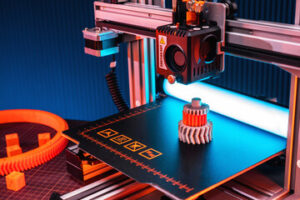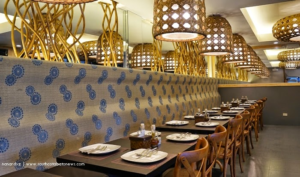A fence may be used to define property limits, add privacy, or mark boundaries. It can also serve a more decorative function, such as providing support for variegated ivies or other vines.
Choosing the style of fence that best complements your home is an important consideration. Fortunately, there are many attractive options. Contact Charlotte Fence Company for more assistance.

A privacy fence is a barrier that restricts views of what’s inside. It can be used to create intimate outdoor spaces, limit prying eyes and enhance property boundaries. It’s typically made of solid panels or closely spaced vertical boards without gaps, and can be any height desired.
Privacy can have a positive effect on your life by helping you feel free to express yourself. However, if privacy is taken too far, people can begin to censor their speech and make decisions out of fear of being monitored. The impact of this can be seen in a number of ways, including self-censorship, loss of personal autonomy and lowered quality of life.
For Brandeis and Warren, privacy was about protecting the virtuous from being subject to public scrutiny of their private affairs. The exposure of such affairs, they feared, would level society by corrupting the values of those who had high moral standards and replacing them with those of the base.
Fences (also known as receivers or pawnbrokers) act as middlemen between thieves and the eventual buyers of stolen goods. Fences often negotiate a price with thieves that varies according to norms and the legitimate market value of the goods. They may also have clandestine relationships with other fences in other locations, enabling them to exchange large volumes of items.
Security
A fence is a barrier that separates two areas. It can be made of wood or wire and it may be used to keep livestock in or out of an area. A fence can also be used as an obstacle or barrier in show jumping or horse racing.
Security is the degree to which a person, community, or nation is protected from harm or loss. It is often the result of policies and procedures that help to protect against espionage, theft, damage, and other threats. Security management is the process of identifying an organization’s assets (including people, buildings, machines and information systems), developing and documenting these assets, and creating and implementing policies and procedures to protect them.
During the early modern period, itinerant barbers filled the role of fences by acting as go-betweens for the compounding and brokerage of stolen goods. Itinerant barbers accumulated important sources of information as they traveled, and would then sell these pieces of knowledge to criminals looking for places to hide or individuals to rob.
The fence may also attempt to disguise the stolen nature of the goods by removing or defacing serial numbers, or by transporting them to a city where they are less likely to be recognized as such by potential buyers. Depending on the goods in question, the fence may then try to sell them for close to market value to avoid being caught by law enforcement.
Corporate security is a similar concept that involves the resilience of a corporation against espionage, theft, and other threats. It is often the result of policies and practices designed to prevent these events, as well as an understanding of the risks and potential costs associated with these events. In some cases, it may be the result of a strong culture of security within an organization. Despite these efforts, it is not unusual for a company to suffer security breaches that have significant financial and reputational consequences. Those who fail to incorporate quality security into their facilities fall prey to what is known as “security theater,” which only offers the illusion of safety and security.
Durability
Durability is the ability of a product to withstand wear and tear and continue functioning over an extended period of time. This factor plays a vital role for consumers and manufacturers alike, as it influences both inventory management practices and environmental impact assessments. Moreover, increased durability allows businesses to differentiate their products in the marketplace and build consumer trust.
In addition to influencing product quality, sustainability, and cost, durability also has important implications for the economy as a whole. For example, durable goods are often more expensive than nondurable products, but they last longer and consume fewer resources over time. Durability also has implications for consumer behavior, as some consumers may prioritize immediate costs over perceived durability, leading them to prefer cheaper, less durable products.
As a result, durable goods can reduce waste and increase overall efficiency in the supply chain. For instance, durable goods require fewer raw materials to manufacture than nondurable goods, and they generally have lower operating costs over the course of their life cycle. Durability can also lead to reduced inventory waste and improved customer satisfaction.
Similarly, durable goods can reduce the amount of landfill space that needs to be dedicated to non-reusable items. This can reduce environmental impacts resulting from resource scarcity and waste, as well as encourage the development of circular economy strategies. Furthermore, increased durability can help to lower energy consumption, as durable goods typically use less electricity than nondurable goods. This is a key consideration for companies seeking to implement green initiatives and promote sustainability. Additionally, durable goods can help to improve market competitiveness and customer satisfaction by reducing the need for frequent replacements and repair services.
Aesthetics
Aesthetics is a subject that encompasses many different fields of study, including philosophy, psychology, and art. It focuses on the nature of beauty and taste, and it also examines how people perceive and respond to works of art. Aesthetics can have a powerful effect on our lives, even if we don’t always realize it.
A key concept of aesthetics is the distinction between sensory and aesthetic judgments. Sensory judgments rely on the ability to discriminate at a sensory level, while aesthetic judgements go beyond this. They involve an emotional response that is linked to the capacity to feel pleasure.
The field of aesthetics has a long history, with its roots in ancient Greek and Roman philosophy, and its branches in Western thought and art. Its modern form can be traced to the work of philosopher Immanuel Kant, who defined “art for art’s sake” and the aesthetic experience as “a feeling of pleasure in the presence of what is beautiful.”
In addition to art and the visual arts, contemporary studies in aesthetics extend into areas such as music, architecture, design, and everyday life. Aesthetics also relates to other subjects, such as cognitive and affective psychology and neuroscience, which investigate the impact of factors like emotion, personality variables, and culture on aesthetic responses. It is important to note, however, that while many of these subjects overlap with aesthetics, they also have significant differences.
It is also important to remember that aesthetics can be negative, as well as positive. For example, a statue that is aesthetically pleasing to one person may be repulsive to another. This is the reason why it is so important to consider all aspects of the environment when making decisions about how to landscape your yard.
Despite the difficulty in analyzing non-Western aesthetic practices, scholars have begun to explore how these cultural traditions intersect with daily life. Taking a holistic approach to these studies, they have found that the aesthetic dimensions of ambiance and action are a vital part of people’s lives. This research has led to an increase in attention to Chinese and Japanese aesthetics, especially in relation to how they interact with daily life and broader social issues (Higgins 2005; Matteucci 2017). A growing number of researchers are concerned about the prevalence of a passively accepting aestheticization of life and call for a greater emphasis on active aesthetic perception and vigilance against these strategies (Vihalem 2016).

